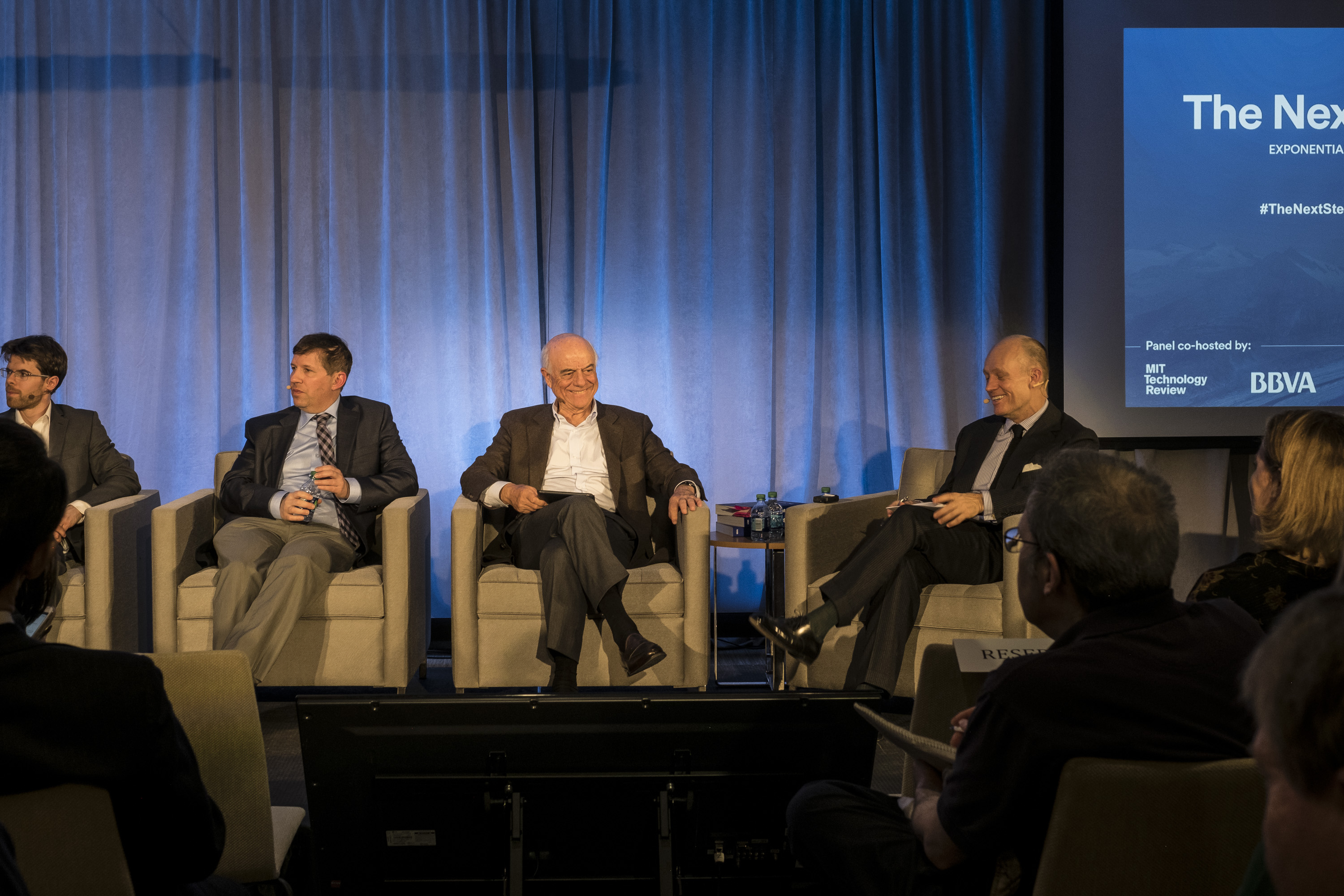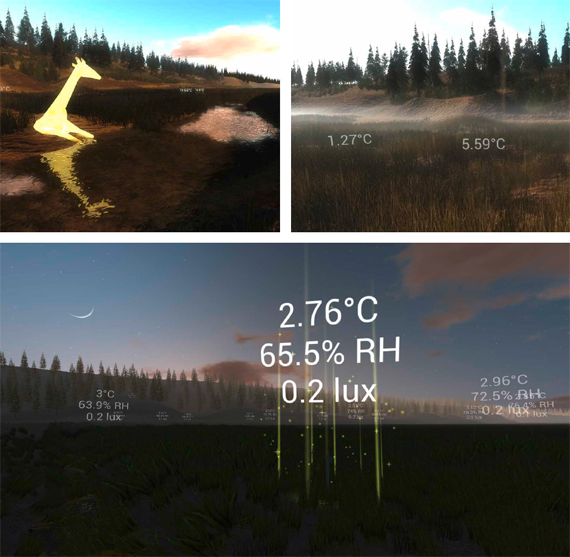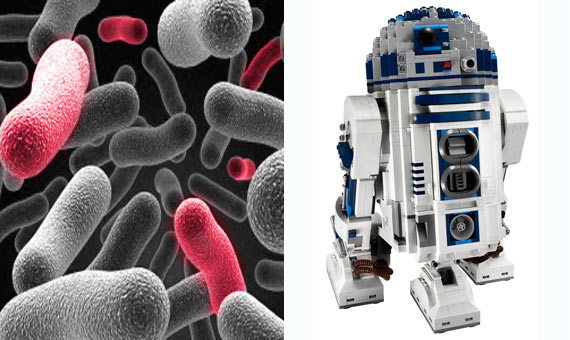The MIT (Massachusetts Institute of Technology: MIT) is one of the most internationally-renowned academic ecosystems in terms of research, technology and the future. With these credentials, it is not strange that OpenMind has selected it as the perfect setting to ponder: What’s the next step? and thus present the BBVA collection’s latest book, “The next step: exponential life”.
Exponential life, a life marked by the progress of so-called exponential technologies is not science fiction, nor a possible exclusively future scenario because technologies are already among us that transform our lives in very different ways. In this article we have chosen 5 examples, explained by the authors of our latest book, to show why we can say that exponential technologies are already here.

Finance, robots, sensors, AI, smart materials, genetics and risks, many risks to consider in this exponential scenario. All these topics are covered in the latest book in the OpenMind series and were also addressed at the presentation event.
Banks already know they will cease to exist
The future is not only what is to come, but also everything we can already confirm that will happen tomorrow. With this perspective, Francisco González (BBVA Executive Chairman and author of the chapter “The next step in finance: exponential banking”) shares his predictions about the changes occurring in the banking system in the short term. From his experience in banking and more specifically in the actual process of transforming BBVA, González can state that the days of banking, as we know it today, are numbered. However, he also believes that this change will bring many opportunities and maintains that this must be the approach that guides financial organizations in this process of evolution and revolution. Will exponential technologies make it possible to develop a more universal and inclusive banking system? This is one of the main hopes for “exponential banking” but always with a clear and inevitable reference: comfort and ease designed by and for the user.
Neurons can “replicate” with sensors
Sensors have become faithful life companions in some of their most classic uses: helping us park, detecting movement, regulating room temperature and so on. However, beyond the applications we already know, these technologies promise to become a true vehicle of technological expansion. Sensors, in the way they are conceived by Joseph Paradiso (professor at the MIT Media Lab and leader of the Responsive Environments) group may be the key to connecting an enhanced human brain with the Internet of Things.

Some of the projects led by Paradiso include the use of sensors to optimize the relationship between man and his environment. For example, the information that appears in the image above these lines is monitored by thousands of sensors distributed in a natural space in a recovery project. All the information they provide enables resources (e.g. water or fertilizers) to be used efficiently and the ecosystem to be recovered more quickly. But when connecting our brain to the Internet of Things, perhaps the example of an office that recognizes your mood and responds to light, sound or smells depending on the symptoms your body presents (and that are transmitted by different sensors: sound, position, temperature, facial movements, etc.) may be more graphic. Will sensors manage to get us to establish a kind of telepathy with the environment around us?
Genetics is studying how to produce personalized medicines
The days of “one size fits all” medicine are numbered thanks to genetics. Studying the genes that make up our genome and the interactions that certain combinations of these genes produce will enable geneticists to develop custom patterns of response to disease. Steven Monroe Lipkin, professor of medicine at Weill University and director of the Adult and Cancer Genetics Clinic of the New York-Presbyterian Hospital, maintains that genome sequencing efforts have to start from a collective study and then be translated into a tailored application. Does this seem like a contradiction? Nevertheless, this is key so that the medicine of tomorrow can generate large databases with the genome of individuals at national and international level. In this way, Big Data will make it possible to cross reference and analyze results to establish response patterns and custom treatments. But, what risks are the individuals in these studies exposed to? Will progress in genetics entail further discrimination, for example, when taking out medical or life insurance?
Institutions and governments today have future risks very much in mind
The 21st century will be the most important (with more consequences) for the existence of the human species. That is the position of Seán Ó hÉigeartaigh, researcher of global risks and emerging technologies at the Cambridge Centre for the Study of Existential Risk (CSER). So far, as a civilization, we have survived being exposed to natural hazards such as earthquakes, glaciations, solar storms or meteors, among others. However, it seems that technology, on the one hand, has helped us to learn more about how to prevent or anticipate these risks. But, on the other hand, technological progress itself is now the source of many threats that human civilization will have to face. Despite everything, Ó hÉigeartaigh will not surrender to pessimism and believes the risks we are exposed to by technological progress – climate change, overflowing artificial intelligence, overpopulation, potential biological weapons or directed pandemics – are controllable and therefore, it is essential to raise awareness in society and begin to direct the progress of each area with the risks being kept very much in mind and working in parallel to prevent them.
The robots of the future will be more like a bacterium than R2-D2 (Star Wars)
Jonathan Rossiter is a Robotics professor at the University of Bristol and is studying how to develop robots that allow natural interaction with humans. For this, smart materials (that respond to stimuli as a muscle tissue would, for example) are being used and naturally occurring structures such as bacteria are considered (which take up more space in our body than actual cells). The result of this combination of materials and forms is soft robots, which reconsider the definition of the term robot.

Soft robots will allow our body to relate to robotics easily without abruptness, thus allowing us to integrate robot devices in our own body (for example, a robot made with gelatin that we can swallow to act as a “doctor” and attack cancer cells). This new relationship with robots will make the difference between soft and hard robots gradually disappear and, moreover, the very difference between what a robot is (or what it contains) and what it does not stops making sense in itself.
Dory Gascueña for OpenMind
@dorygascu
Comments on this publication